If you are new to visvim, it might be hard to comprehend the prices of the niche Japanese brand at first. $500 t-shirt? $1,000 sneakers? $1,300 pair of jeans? $2,000 Mechanics Coveralls?… Damn, for those prices you shouldn’t be surprised some garments may come complete with traces of mud.
Is it the limited availability? Visvim rarely re-releases the exact same versions of its pieces. Is it the exclusive production techniques? The brand is known for unique handicrafts like stencil dyeing, Kyo-yuzen kimono hand-painting, hand-weaving done by the Buyi ethnic minority in China, and yes, mud dyeing.
Or is it the price point itself?… Unlike luxury fashion houses, visvim doesn’t do much marketing to be forced to include its costs in the final product. There must be something in there for that kind of money after all.
Whatever that is, something is intriguing in visvim. In this article, I try to figure out the story behind the $1,895 Harrier Down Vest.
Small ask: If you find this article exciting or helpful, I’d be incredibly grateful if you helped others discover it. Hitting ❤️ , or sharing/restacking, are all a huge help. Thank you!
PS If you are viewing this post in your email app, consider opening it in browser by clicking the post’s title — it might be too long to fit into an email.
Like most menswear brands, visvim doesn’t provide much backstory on its clothing. A contemporary reinterpretation of the classic utility wear, that’s all you get. You could use the same description for virtually any piece of modern clothing. I guess I should buy clothing for itself, not because of the beautiful stories that surround it. But for some reason, I often find myself interested in the background more than in the pieces themselves.
My investigation started with this Lifeguard Down Vest by the cool South Korean brand named Eastlogue. I own a couple of items from them, and can definitely recommend them. While it’s completely different in aesthetics from the Harrier Down Vest, the Eastlogue’s version was the first fashionable life jacket alternative to the pricey visvim.
Eastlogue describes its vest as ‘a reinterpretation (I’m not kidding) of USN Kapok Life Vest‘. USN stands for United States Navy, of course. So I started digging into what they have used in the army to stay afloat back in the day.
Kapok life vests came to replace the outdated cork jackets in the early 20th century. Apparently, that’s what you wore in the navy in the second half of the 19th century:
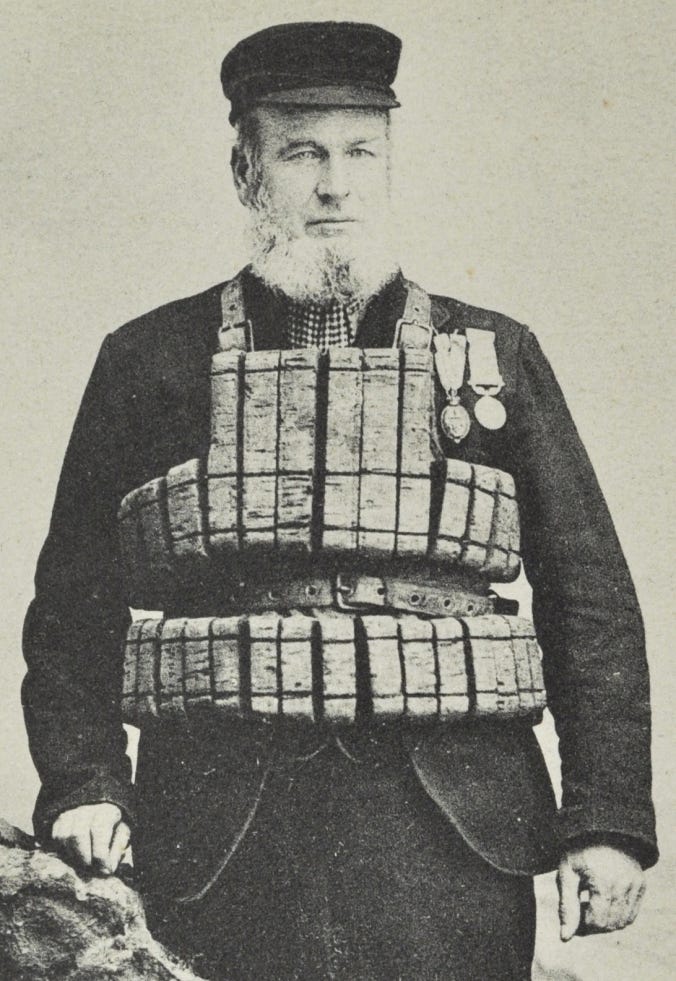
The name Kapok comes from the eponymous tropical tree. Kapok fibers develop inside the fruit bags and visually resemble cotton pods. Natural oils make the fibers hydrophobic and the air between them provides buoyancy.
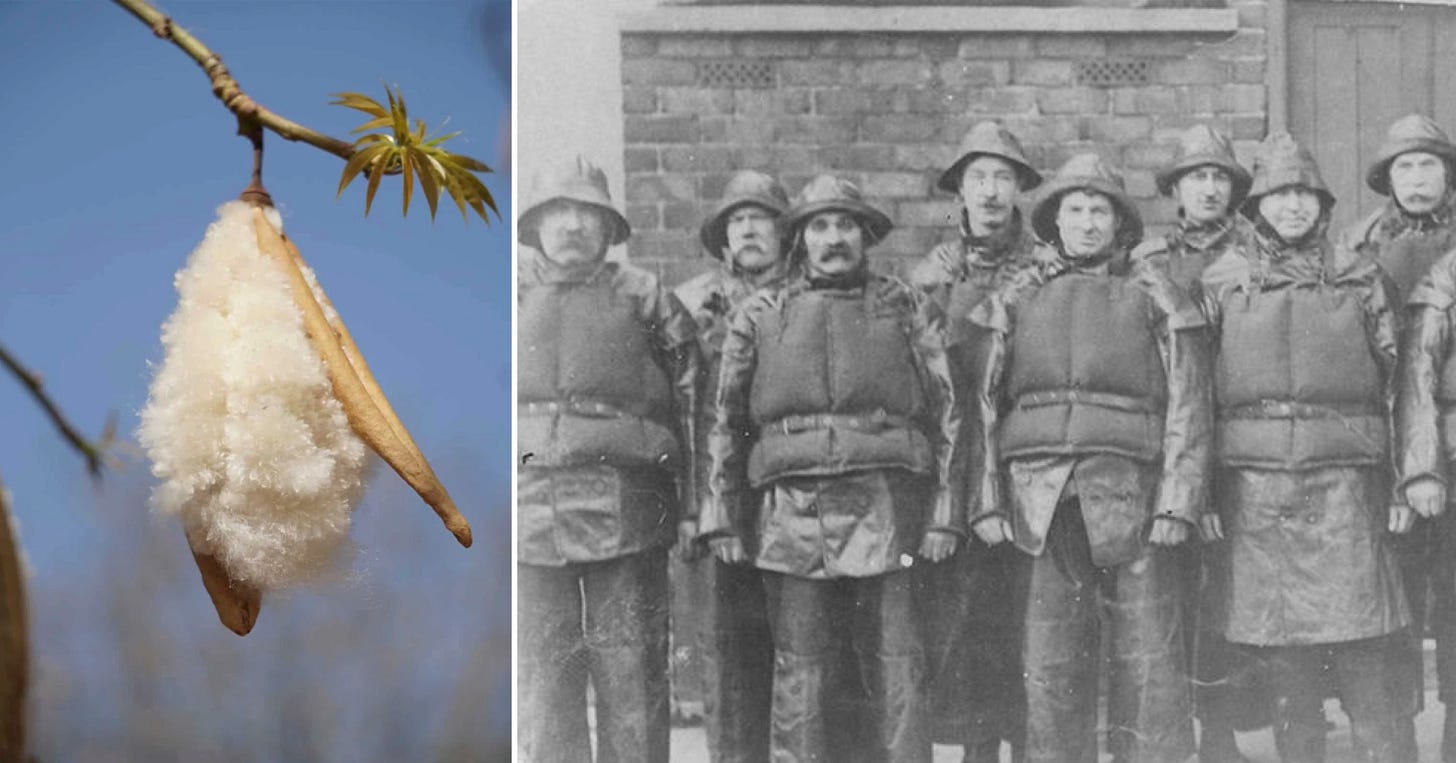
To make a life jacket, they put kapok fibers inside waterproof vinyl pouches that went inside a canvas vest. The waist belt prevented from slipping out of the vest.
Most photos of WWII USN coast guards that I found feature Kapok vests with an additional element — a headrest:
I even stumbled upon this small company based out of Pennsylvania that specializes in canvas upholstery for boats and recreates the original WWII Kapok Life Vests in modern (read synthetic) materials. Interestingly, they make a difference between early war and late war versions. Both of which still feature a headrest.
While visvim references the headrest element in its PFD Jacket and PFD Down Vest (PFD stands for Personal Floatation Device), the Harrier Down Vest comes without one. Which I find more appealing.
Unfortunately, I wasn’t able to get either information on or photographs of a Kapok vest with a removable headrest. The only pieces of evidence are these two vests I found at specialized vintage stores:
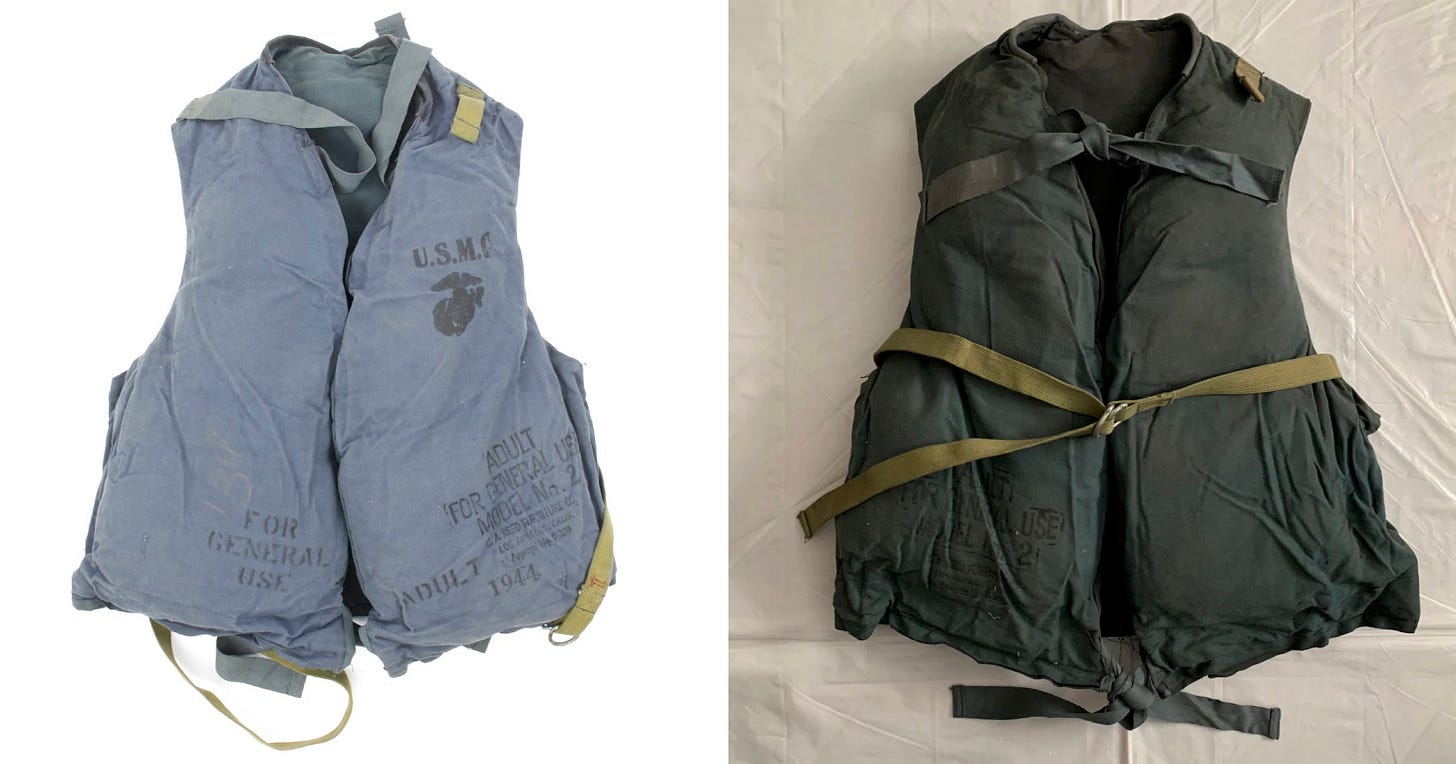
The one on the right is sourced by a very curated vintage store called Constant Practice and is still on sale for $800. Looking at how it fits, ‘contemporary reinterpretations’ suddenly make sense…
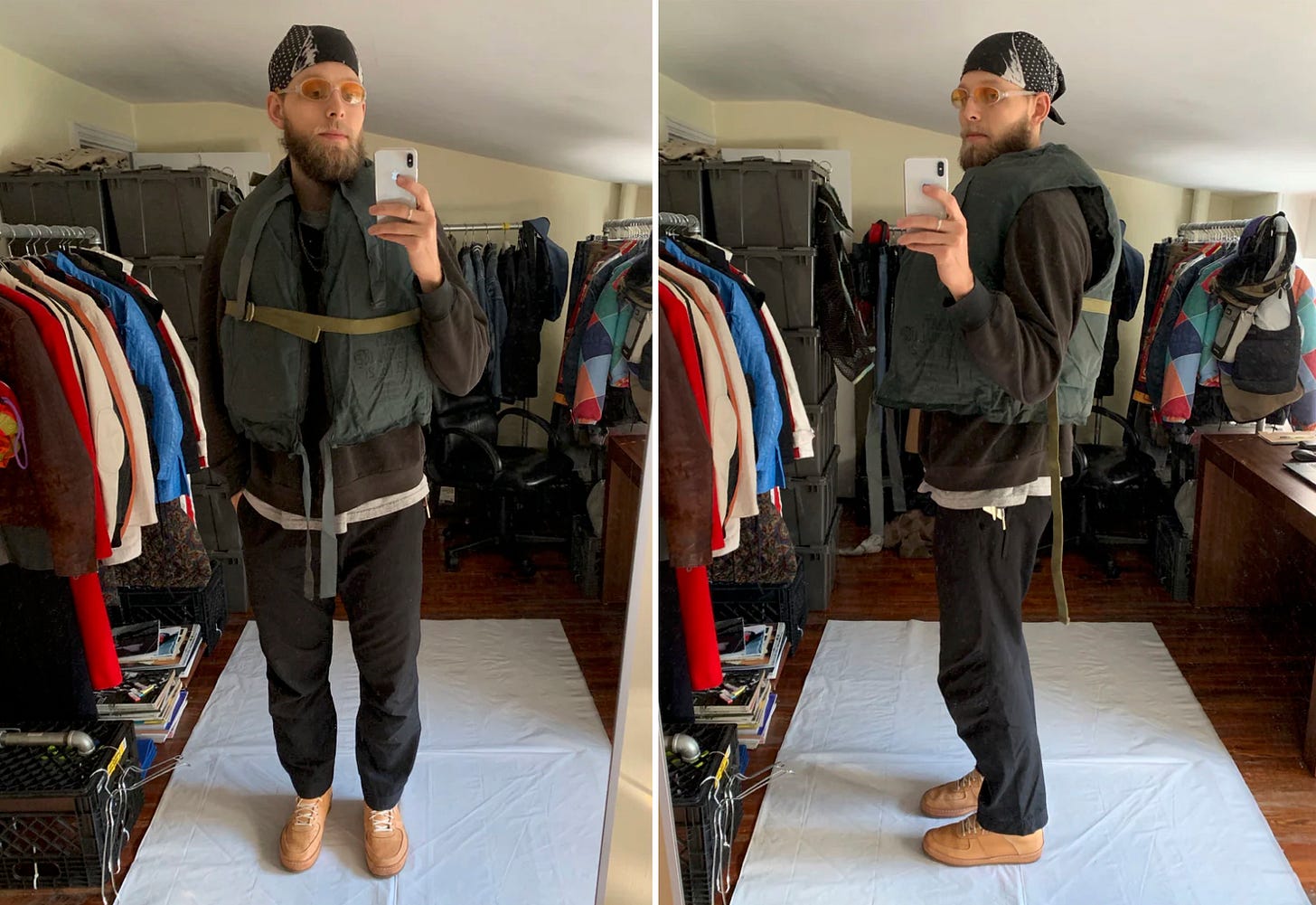
Curiously, Constant Practice used to resell another headrest-less version of a WWII-era Kapok vest:
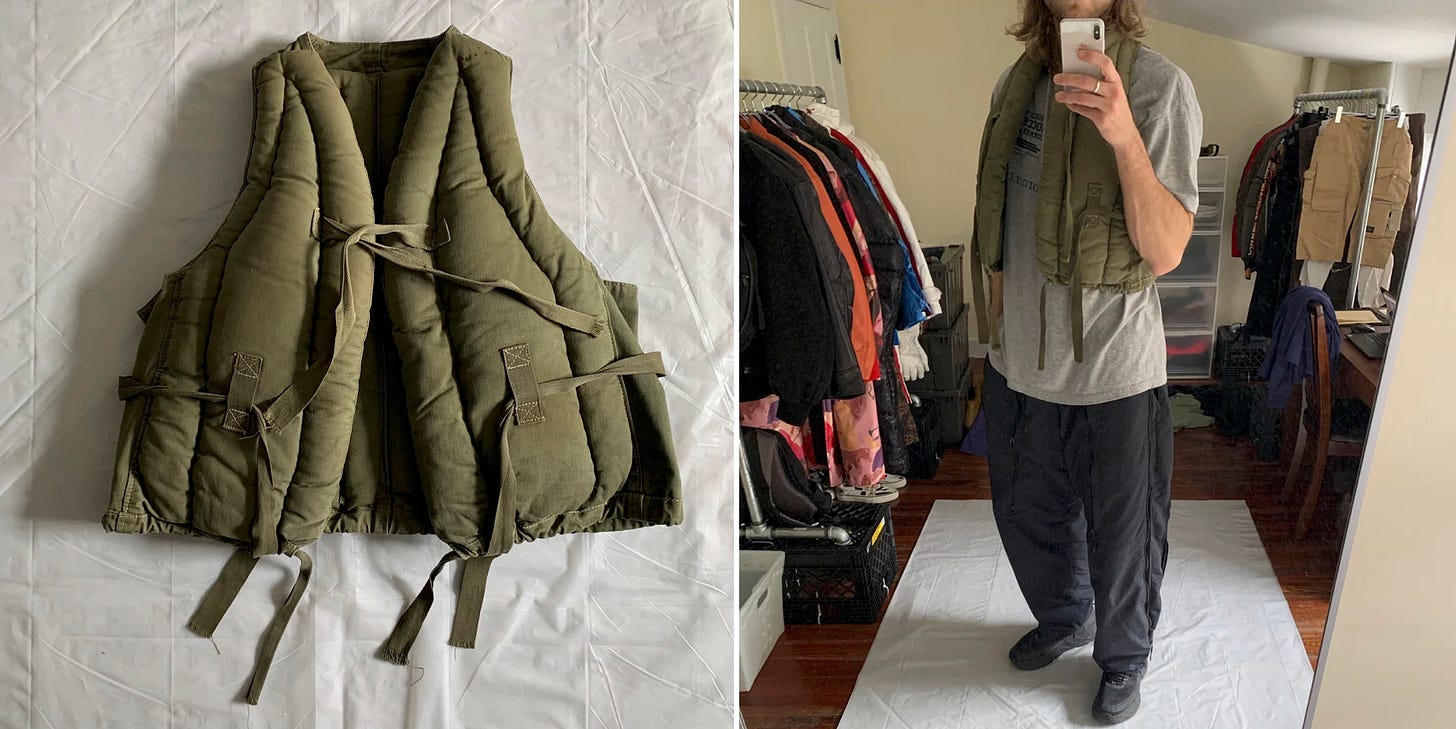
Looking at the one above, I can feel where Eastlogue took inspiration for its contemporary reinterpretation which got me in this investigation in the first place. Perhaps, I shouldn’t be surprised that visvim made its own version as well.
However, it didn’t get me closer to tracing the origins of the Harrier vest. My last hope was the name ‘Harrier’ itself. Apparently, these smaller species of hawks gave its name to the 1920s biplane torpedo bomber and 1960s vertical takeoff ground attack jet. Both of which were developed in the United Kingdom and don’t seem to connect to the WWII-era Kapok life vest. The only working hypothesis was suggested by the good folks at StyleForum: Harrier jets landed on aircraft carriers which might have required staff to wear life vests.
Here my investigation has stalled. I haven’t managed to find either the archival photos of a headrest-less WWII-era Kapok life vest that inspired visvim Harrier or where the name ‘Harrier‘ comes from. It might be that I completely missed some small fact that explains everything. Or there might not be an explanation at all. It’s just a contemporary reinterpretation of the classic utility wear after all.
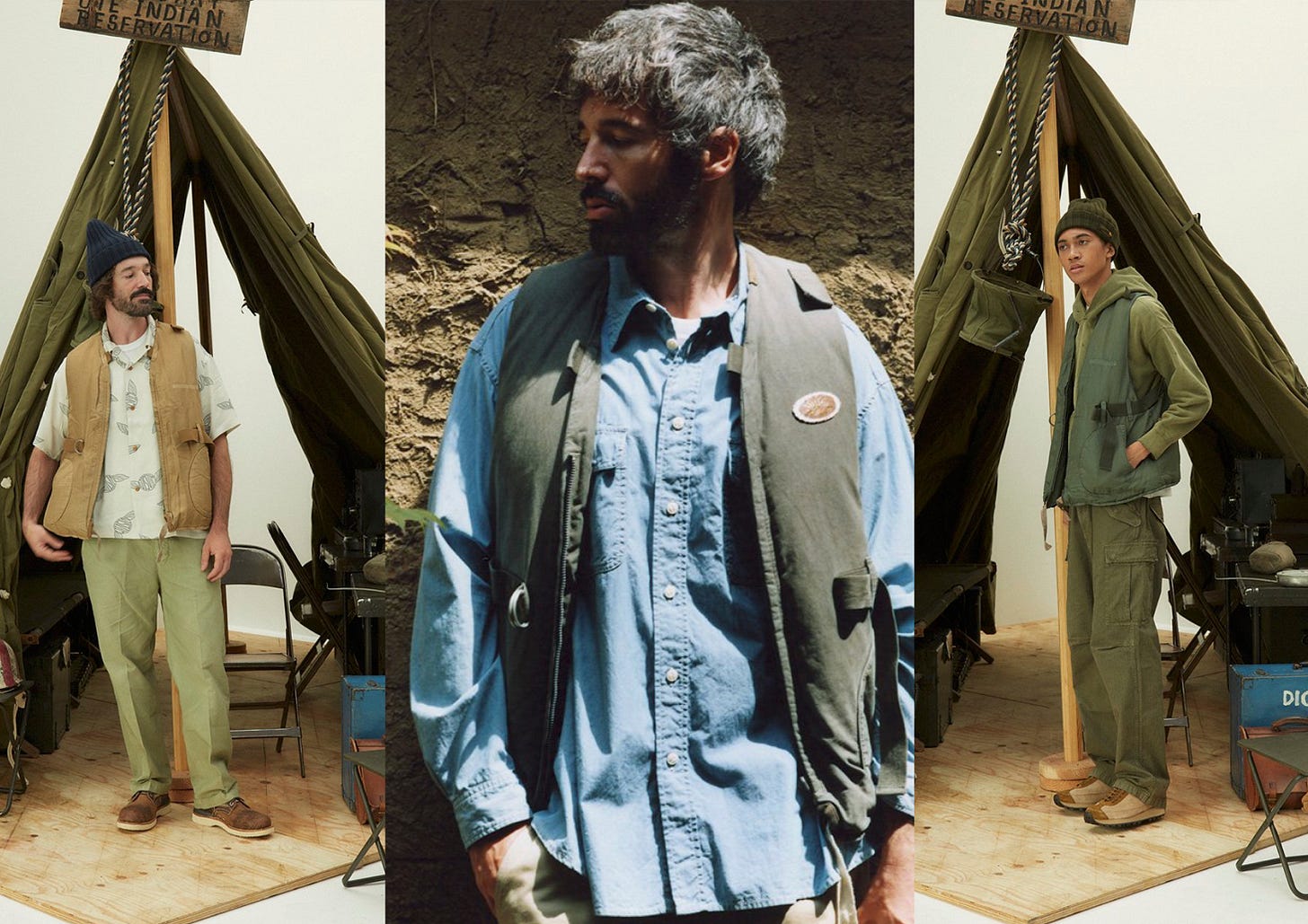
The Harrier Down Vest by visvim is executed in rayon fabric and filled with real goose down. Which of course makes it more of an insulating jacket than a life vest. If we are talking about function at all. Interestingly, being a semi-synthetic alternative to silk, rayon is usually a shiny and slippery fabric. But after going through garment dyeing and artificial damaging processes, the Harrier Vest appears beautifully faded without being sticky or smelly like the vintage originals.
Does it justify the $1,895 price tag? I believe that in the case of visvim prices are out of discussion. I simply hope that once I acquire the vest my life will instantaneously turn into this:

PS If you have any ideas or additional details on the origins of the Harrier vest or Kapok jackets in general, please feel free to drop by in the comments section below. I would be happy to update this article to make it the best source of knowledge for this extremely peculiar subject of interest.
Thank you for reading the article until the very end🙏 It genuinely means a lot to me. I would greatly appreciate it if you could hit a ❤️ and restack it here on Substack or share it on your social media to help others discover it too.
And if you would like further reading, here is a selection of my best articles:

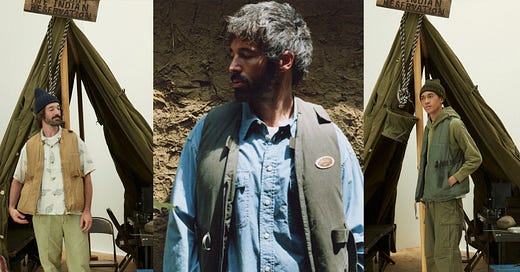


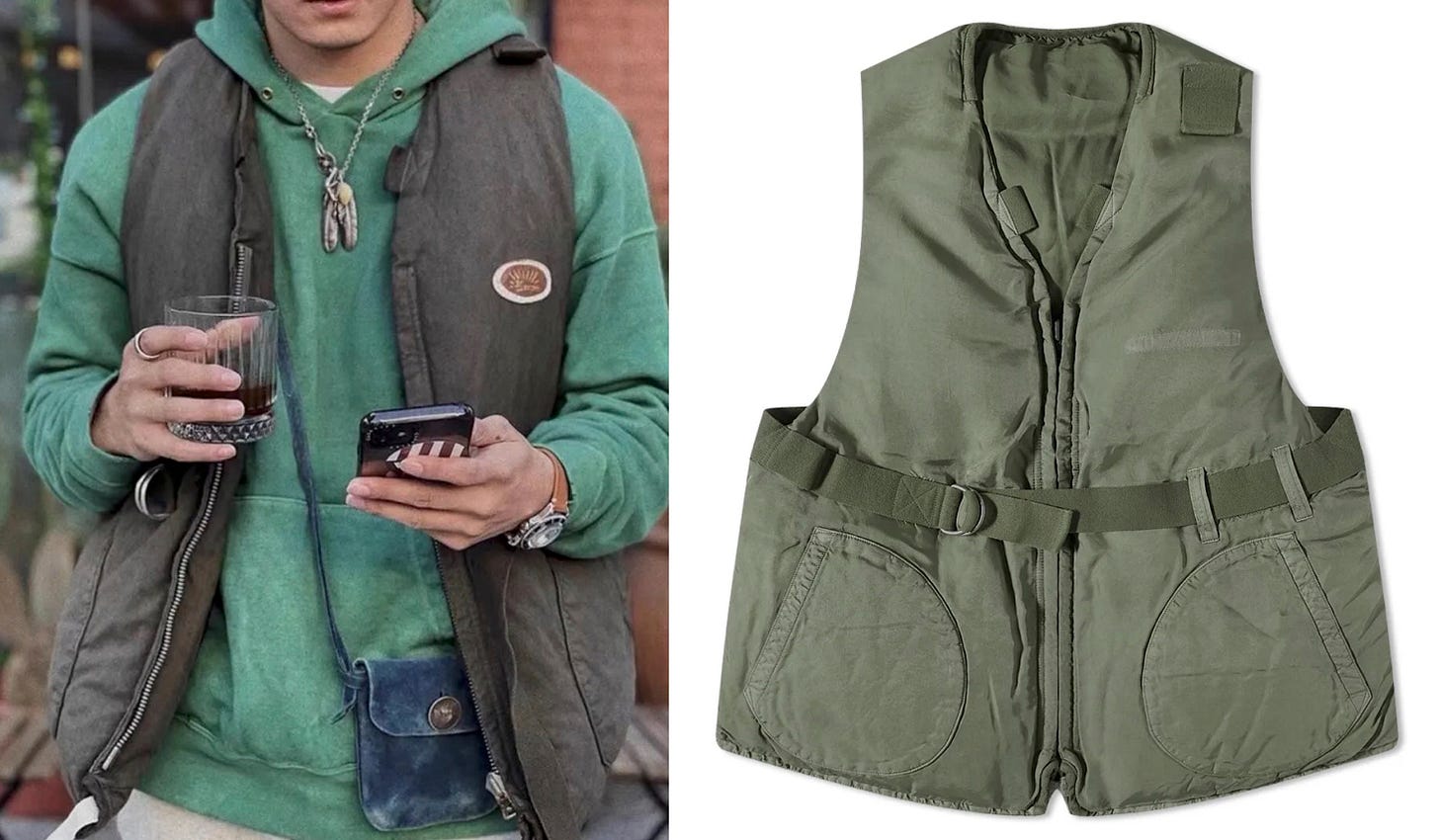
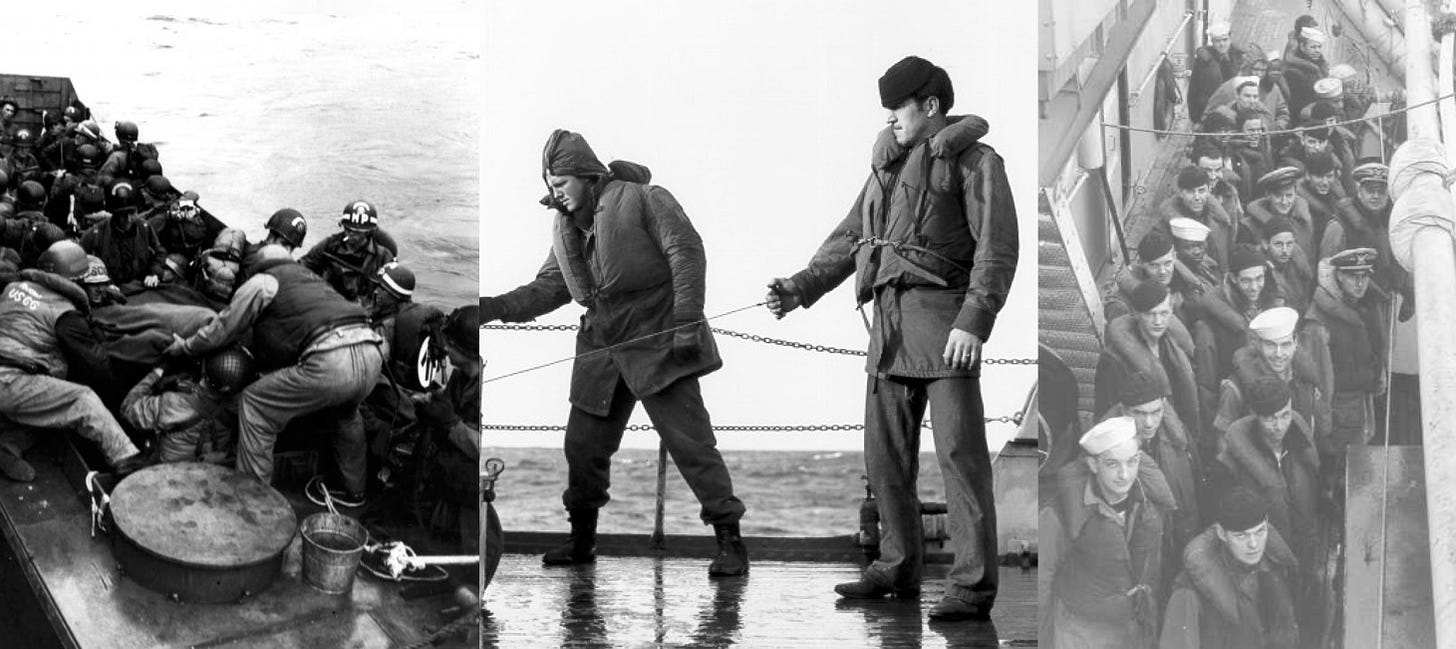
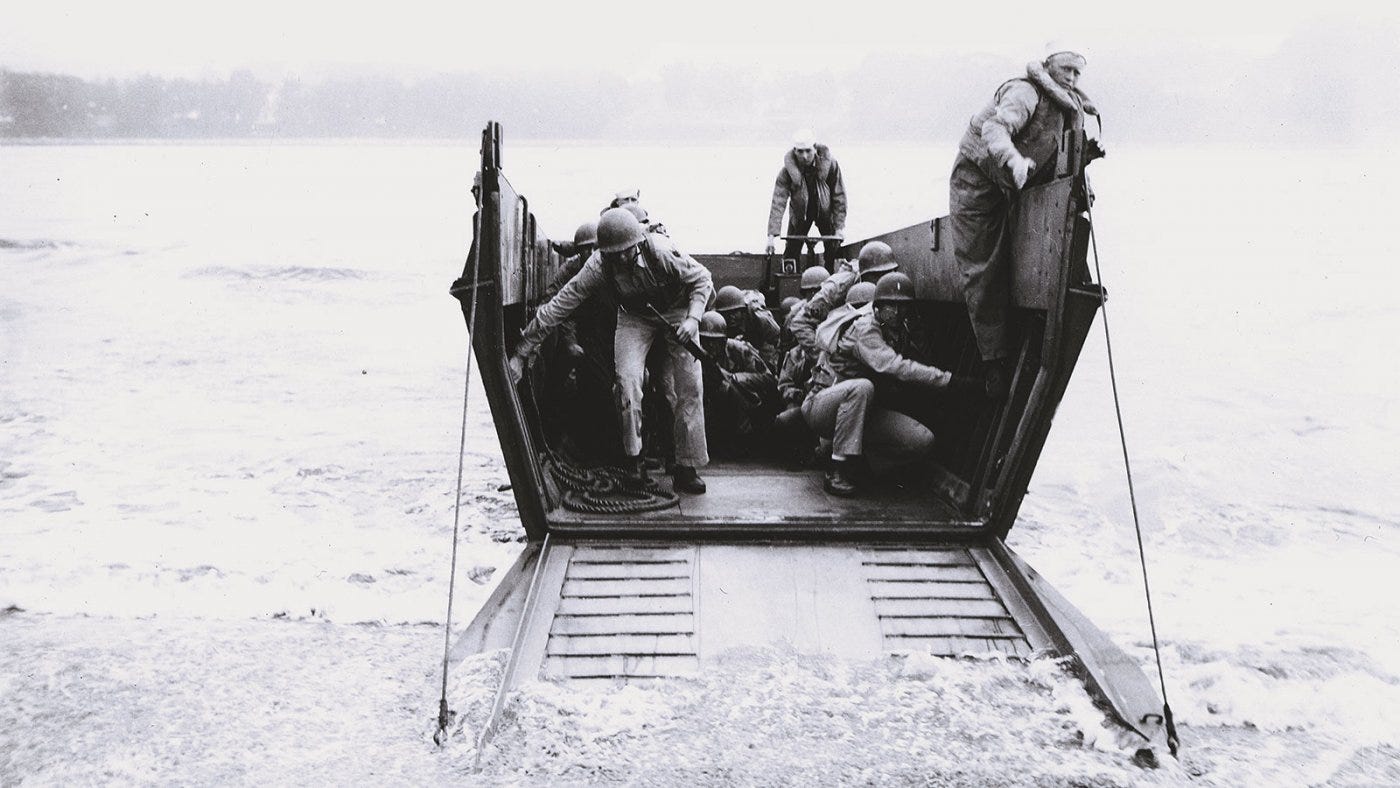

Visvim prices are insane, probably I will never be able to comprehend them. and thanks for revealing Eastlogue, didn't know about them!